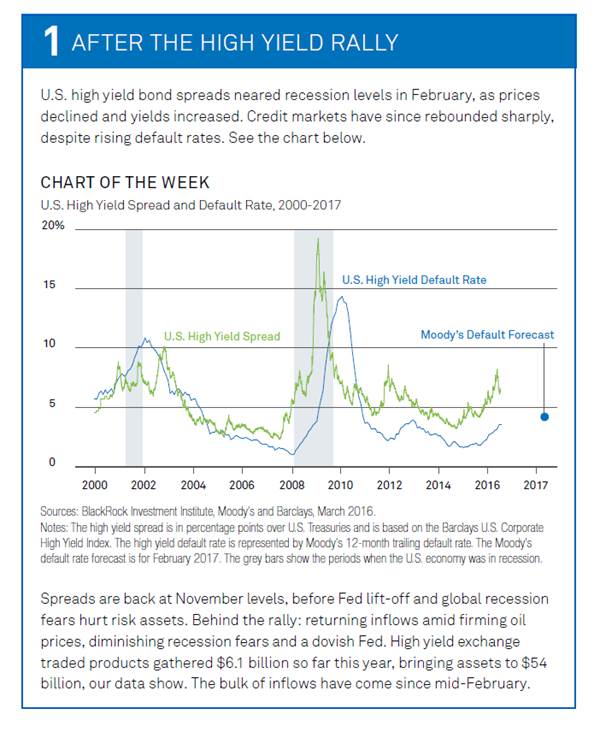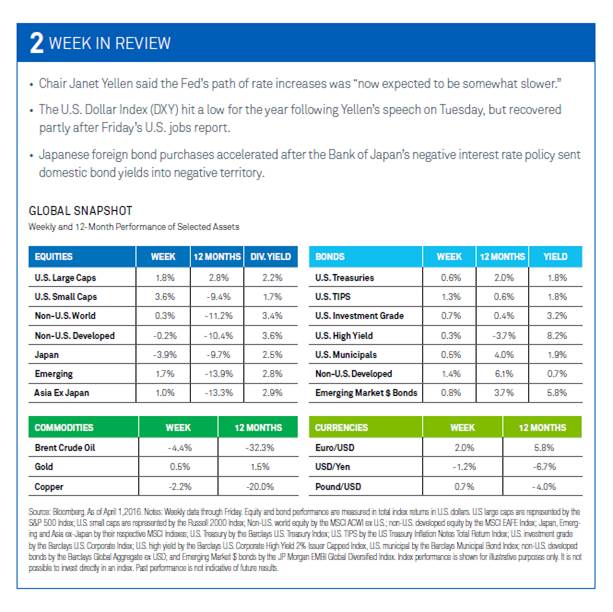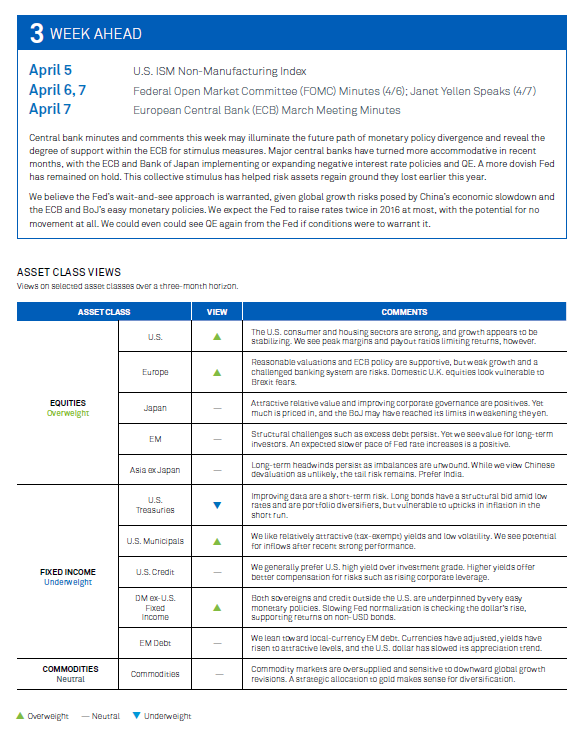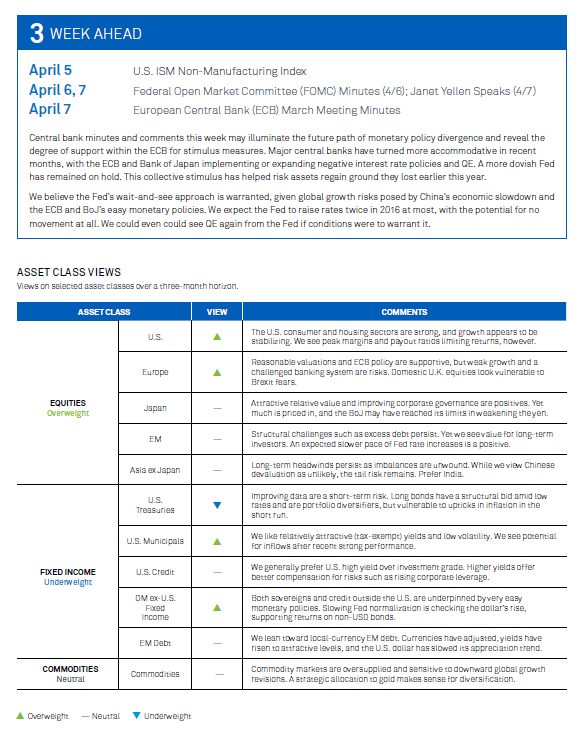Key points
• We have downgraded U.S. credit to neutral due to less attractive valuations after the recent high yield rally and rising default rates.
• U.S. Federal Reserve Chair Janet Yellen’s dovish remarks lowered expectations of rate increases and pushed down the dollar.
• Global central bank minutes this week could show the degree of support for stimulus and the extent of future policy divergence.
More Cautious on Credit
High yield isn’t cheap anymore. With spreads approaching their 15-year average, the bonds no longer price in a high risk of a U.S. recession. Spreads remain above typical levels associated with an economic expansion, but they reflect today’s low-growth world, highlighted by back-to-back quarters of around 1% annualized growth in U.S. gross domestic product (GDP).
We view the risk of a recession as low, yet acknowledge default rates are ticking up. Moody’s sees the U.S. default rate rising to 4.7% in the next year, as the chart above shows, given deteriorating credit conditions in sectors sensitive to declining commodity prices. Our analysis of spread levels shows defaults could be even higher. We believe Moody’s may underappreciate the potential for weakening credit availability among commodity issuers to spill over into other sectors.
We have downgraded our view of U.S. credit from overweight to neutral as a result. Note we generally prefer U.S. high yield over investment grade and sovereigns. Higher yields offer better compensation for risks such as rising corporate leverage. We like cable, building materials and gaming companies within the sector, and are avoiding utilities and resources. We generally prefer non-dollar credit to dollar credit, with quantitative easing (QE) from the European Central Bank (ECB) providing support for euro credit markets.
Richard Turnill is global chief investment strategist at BlackRock.












